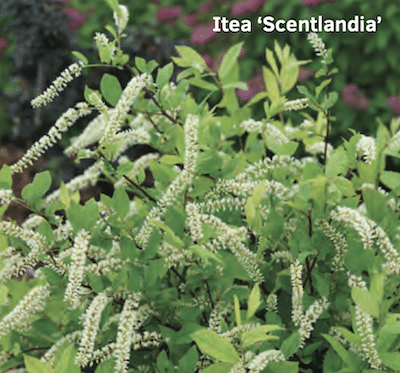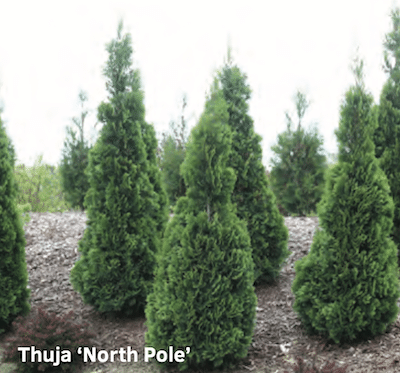Tough Stuff: Growers and Retailers Turn to Improved Genetics
In January 2021, 100-year winter storm Uri struck the Southeast and Southwest with temperatures below zero degrees for multiple days. A severe weather event alone would have been enough to concern the most seasoned of growers. However, this storm was to have more impact than first expected.
As commonly seen in the South, the week before Uri graced us with its presence, temperatures had reached the 80s. This winter warm-up undoubtedly caused many plants to begin to break dormancy, and vascular tissue was full of the first spring’s sap. The unseasonably warm temperatures followed by the onslaught of days of freezing weather resulted in significant damage across Oklahoma, Texas, Arkansas, Louisiana and Mississippi.

Once the freeze passed, homeowners and landscape managers anxiously waited to see if any new growth would come from what was once their landscape. Major shrub losses from Uri’s freeze were rhaphiolepis, gardenia and loropetalum, all major genera that would affect garden centers for decades. While some plants like distylium, rhododendron (azalea) and lagerstroemia had considerable shoot damage, they were protected by a blanket of snow and new growth has been seen to emerge.
After the snow melted and the carcasses of crispy plants were evident, there was a mad rush for new plant material. Paired with the surge of pandemic gardening from 2020, consumer demand was both overwhelming and challenging to predict. Customers from across the South were buying every live good available, in some cases with limited opportunity for long-term consumer success. Did landscape suppliers and retailers make good plant choices? Did our consumers have good plant choices? Many home gardeners want shrubs they are accustomed to growing, but ultimately we must educate consumers and assist them in making appropriate plant choices.
At Spring Meadow Nursery, we are continually looking to introduce the best genetics available. In the past, breeding was heavily driven by consumer demand for increased flowers or yield, better habits, and increased disease resistance. What about cold hardiness? What about heat and drought resistance? How do you market a plant to consumers from coast to coast with wildly different growing conditions?
Native plants are a great choice for gardens where extreme weather conditions are possible. They have evolved in a regional environment and have survived conditions typical to those areas. This could be extreme hot or cold, periods of flooding or drought, or persistent wind. Great selections of tough native plants include:
‘Simply Scentsational’ Calycanthus Floridus

The most fragrant sweetshrub I have ever smelled! Maroon flowers bloom throughout the plant and emit a tropical fragrance of banana, melon, and strawberry. ‘Simply Scentsational’ sweetshrub grows to 6 feet tall and makes a great addition to a mixed border or woodland landscape. Zones 4 through 9.
‘Gatsby Gal’ Hydrangea Quercifolia
More compact than the naturally occurring species, ‘Gatsby Gal’ reaches 5 to 6 feet tall, making it perfect for smaller gardens. Large white inflorescences shine on top of the densely branched plant. Growers and consumers will appreciate how good this plant looks in a retail container. Zones 5 through 9.
‘Gem Box’ Ilex Glabra
A native boxwood replacement! ‘Gem Box’ is a densely branched, ball-shaped inkberry holly with dark green foliage with red tips on new growth. Perfect for use as a hedge, foundation shrub or even container. Zones 5 through 9.
‘Scentlandia’ Itea Virginica

A very fragrant Itea selection with increased bud hardiness. In the fall, the foliage turns a bright burgundy red. Growing to a height of 2 to 3 feet, ‘Scentlandia’ sweetspire is hardy in Zones 5 through 9.
‘North Pole’ Thuja Occidentalis
A fast-growing evergreen that is more narrow than ‘Emerald Green’ and resistant to winter burn. ‘North Pole’ arborvitae provides a wonderful privacy screen reaching around 15 feet tall. Zones 3 through 8.

Trialing and selecting plants in very different locations produces cultivars that are more suited to a changing environment. At Spring Meadow, we trial plants in many different production systems and locations, including our main field trial sites in Grand Haven, Michigan, and Citra, Florida. Plants that perform well in both locations are some of the toughest shrubs in our catalog.
These resilient selections include:
‘Purple Pillar’ Hibiscus Syriacus
The perfect rose of Sharon for smaller landscapes. ‘Purple Pillar’ has a fastigiate habit only growing 2 to 3 feet wide and reaching up to 16 feet tall. This narrow plant blooms all summer, and its purple and red flowers are irresistible to pollinators. Purple Pillar Hibiscus syriacus will perform well in USDA Zones 5 to 9.
‘Limelight Prime’ Hydrangea Paniculata
An improvement of the classic ‘Limelight’ panicle hydrangea with darker foliage, stronger stems, and more compact growth, reaching just 6 feet tall. ‘Limelight Prime’ Hydrangea paniculata flowers begin bright chartreuse and age to a rich pink in fall. Its vase-shaped habit presents exceptionally well in a container.
‘Tuff Stuff’ Hydrangea Serrata
‘Tuff Stuff’ provides great winter bud hardiness giving consumers better chances of successful flowering where traditional Hydrangea macrophylla has not performed well. Lacecap flowers cover the plant in early summer and continue to rebloom throughout the season.
‘Center Stage Red’ Lagerstroemia Indica

‘Center Stage Red’ crapemyrtle is a showstopper in the landscape with dark purple foliage and hot red flowers. It is early to bloom in the season and has performed well from Michigan to Florida, maturing to a small tree of about 12 feet tall. Growers will appreciate its strong resistance to powdery mildew and Cercospora and its well-branched habit.
‘Perfecto Mundo Double Purple’ Rhododendron
Orchid-purple double flowers cover ‘Perfecto Mundo Double Purple’ reblooming azalea in early spring, creating a beautiful cloud of color. As the season progresses, flowering continues until another large flush of flowers emerges in the fall. A medium-sized azalea reaching 3 feet tall with pubescent foliage contributes to azalea lace bug resistance. In our trials, it had great cold hardiness and a remarkably long blooming period.
Each year significant climate events appear more numerous and continue to negatively impact our communities. Fortunately, plants can have a positive impact on our changing environment. They sequester water, control erosion, lessen urban heat island effect, reduce pollution and provide much-needed habitats.
Growers, retailers, and landscapers can be champions of biodiversity, and their customers, by helping them make plant selections that can survive what Mother Nature dishes out. After all, the consumer looks to us before, during and after a crisis. Don’t let them down!


 Video Library
Video Library 




















